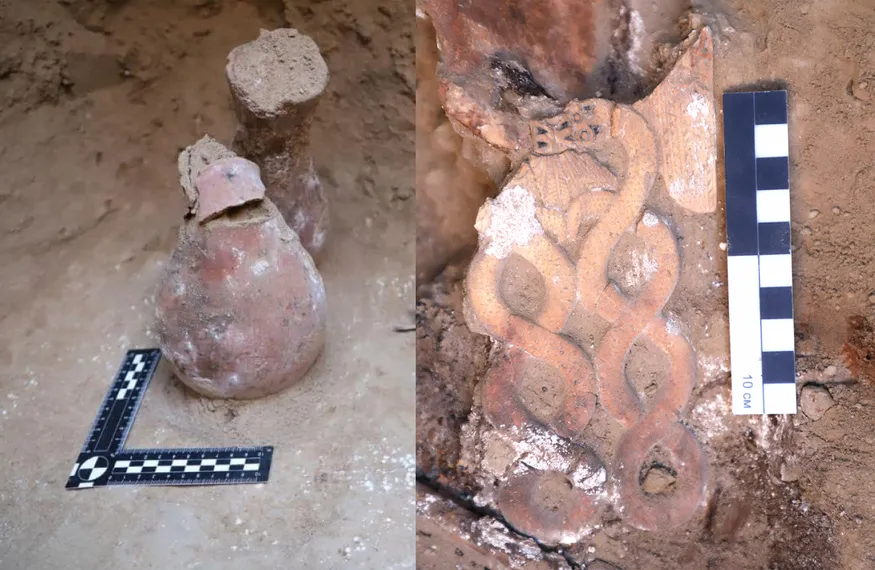The archaeological expedition of the Al-Farabi Kazakh National University near the Taldykorgan Airport excavated a burial mound of the early Iron Age containing rare snake cult imagery, scarcely found in Kazakhstan, QazMonitor reports citing the University’s press service.
During the field research, the archaeological team discovered that grave robbers had targeted the Dauylbay Mound multiple times. The Center for the Protection of Historical and Cultural Heritage in the Zhetysu region reported that the most recent of these incidents occurred last year.
The excavation team hypothesized that the mound may be a 'royal kurgan.' Encircled by a ditch, it stands at 3.4 meters in height and has a diameter of 40 meters. Field investigations revealed that the robbers began excavating from the western side and gradually moved towards the center, where they uncovered a manhole.
Dosbol Baigunakov, the head of the expedition and a Doctor of Historical Sciences, explained that the team identified two grave pits located five meters deeper within the mound.
The first grave pit had been completely looted, yielding only a sheep's shoulder blade, which may have been part of a ritual dish. In the second grave, we found the remains of a man, along with two ceramic vessels, domestic animal bones, and an [Ancient Greek] acinaces sword with a reddish-colored wooden scabbard. Metal and bone plaques, a bronze quiver hook, clip, needle, and gold and bone buttonholes were also discovered. Among the gold items, we found a pendant, a pipe, and gold plaques resembling felines. Of particular interest is a bone plaque depicting a dragon-snake. Such a discovery is rare in domestic archaeology and suggests a cult of snake, dragon, or snake-dragon.
The excavated mound can be associated with the Yuezhi or Wusun cultures, which inhabited the Zhetysu region nearly two thousand years ago. In the future, the archaeological team plans to conduct laboratory research on some of the finds, with certain items being recreated at the Ostrov Krym Scientific-Restoration Laboratory in Almaty.
